Empowerment of La Grande Borne
An alternative approach for a cité (Paris-Grigny, France)
The French sixties neighbourhoods are notorious. Urban planning failed (see e.g. Epstein, 2016). Grigny in the southeast of Paris metropolis serves as one of our prime reference projects. Our case here is the cité (neighbourhood) ‘La Grande Borne’. Favas.net started a research project to improve the social fabric of this neighbourhood (first phase, 2016, in co-operation with magazine Blauwe Kamer). Complementary to the official urban blueprint plan we want to invent an alternative approach that includes local interest, culture and knowledge and offers residents opportunities to develop themselves socially and economically.
La Grande Borne is located in Grigny municipality (Departement Essonne, Île-de-France) on the A6 motorway (Autoroute du soleil) and near the RER station on line D (Grigny Centre). The neighbourhood (Cité) was once a showcase for high-quality social housing that, despite its industrial construction method, had unmistakable architectural quality. The famous architect Emile Aillaud was responsible for this creation. He was the spiritual father of neighbourhoods such as La Grande Borne throughout France. The district became known as La Cité des Enfants, as an urban utopia for children, where instead of traffic a beautiful, centrally located park allowed the children playing safely.
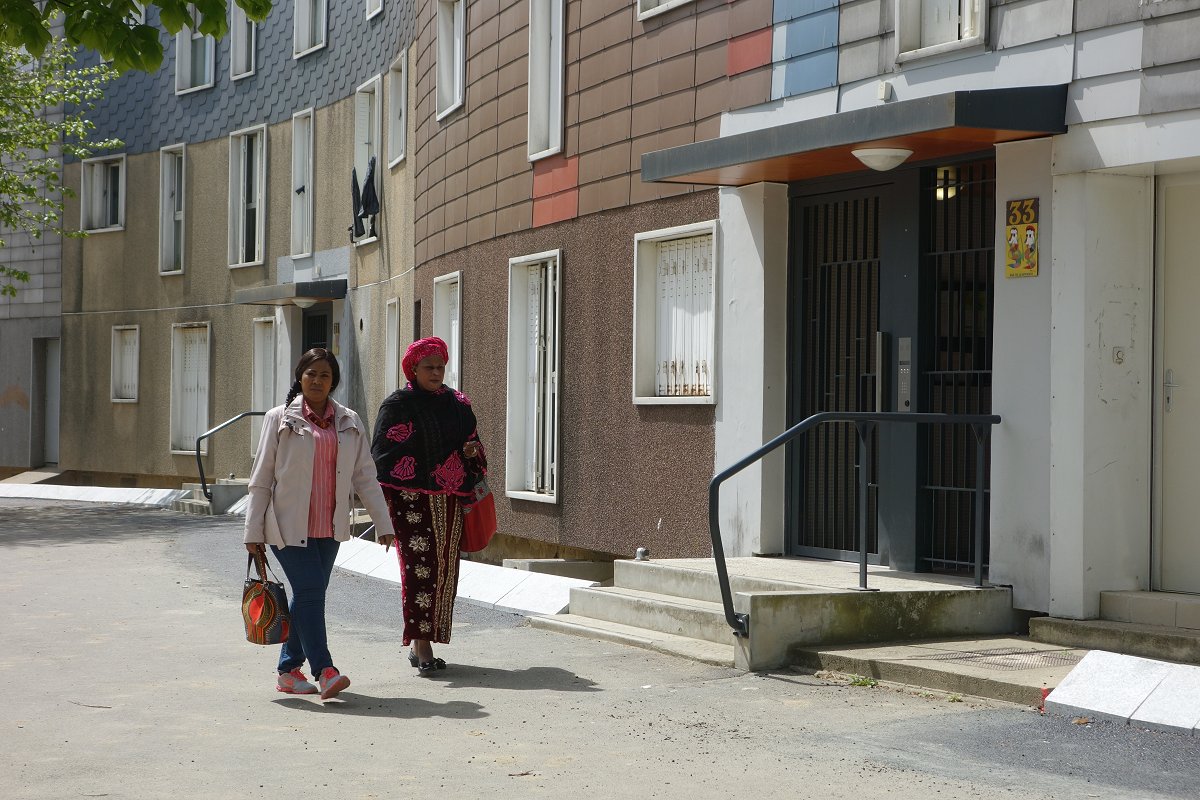
This Cité has now existed for several decades and social developments have put a heavy burden on the administration. La Grande Borne as part of the Grigny district is located in the department 91. Most (problematic) suburbs around Paris can be found in the departments 93 and 94, as well as in the 91. In recent decades, the suburbs faced the rise of social, cultural and economic problems. La Grande Borne is no exception to this. The image is well-known. There is a lot of poverty and unemployment, and above all drug-related crime. Moreover, houses have fallen into a bad state and many facilities and amenities have disappeared. This dramatic image represent the poor side within the social dichotomy between the rich, central Paris and the poor suburbs beyond, whose inhabitants are reviled.
But this is also a stereotypical image, because in La Grande Borne and similar neighbourhoods people try to make something of their lives. It is wrong and unjust to reduce them to the supposed uniform specie of suburban residents. Because the differences and the possibilities cannot and should not be underestimated. La Grande Borne can again serve as a showcase. Now as a habitat that is being prepared for the future and that can soon be part of a new Grand Paris. In this regard we list a number of projects, measures and ideas.

To ‘open up’ the Cité La Grande Borne is the core idea behind the government program that has been underway for more than ten years. To this end, a series of projects has been initiated. All of which have in common the aim of improving the quality of life in the neighbourhood, in particular by strengthening amenities. We highlight a few key projects here. And also show some social and cultural opportunities.
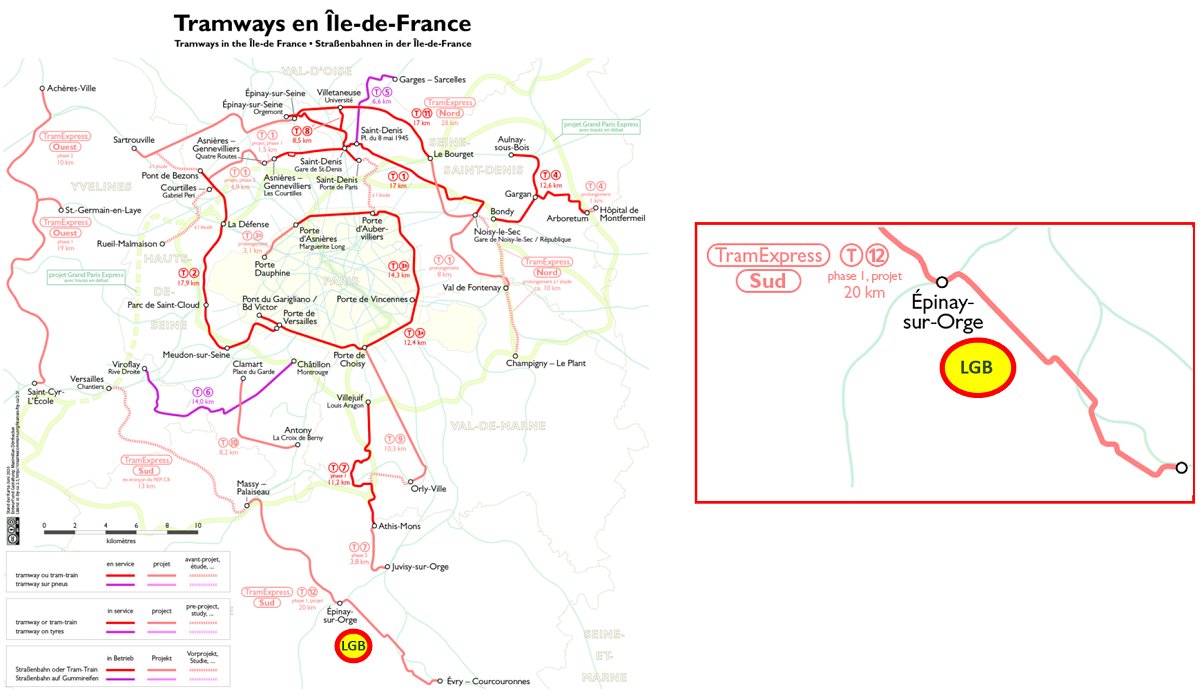

Leading is the improvement of accessibility. Not only in the connections with the city of Paris (RER line D is being renewed), but especially with the other suburbs. To this end, a regional express tram line is under construction (to open at the end of 2023), with two stops at La Grande Borne. The tram will soon continue to the edge of the metropolis (Évry) and on the other side to the town of Massy (also in the suburbs, but with an opera and two swimming pools!). You can transfer to other public transport at numerous places along the way. In a similar way, La Grande Borne will have a much improved bus offer allowing improved accessibility. Bus line 402 is already running “In the heart of La Grande Borne”. Next year, the 402 will be replaced by a new high-quality bus line according to the new ‘T Zen’ formula, which provides a dedicated busway and operation with beautifully designed electric super buses.
For years Grigny and its stakeholders have been working on a plan to ‘open’ La Grande Borne. This literally marks a new path. The traditionally introverted neighbourhood has been opened up and made accessible. To this end, the Voie de la Plaine breakthrough project has provided for a new, double street, including a bus lane, right through the central part of the area. The centrally located bus stop has greatly improved the accessibility and thus the quality of the neighbourhood. Seen in this way, the Voie de la Plaine breakthrough project is a sign that, despite increasing segregation, hope has not yet been given up.
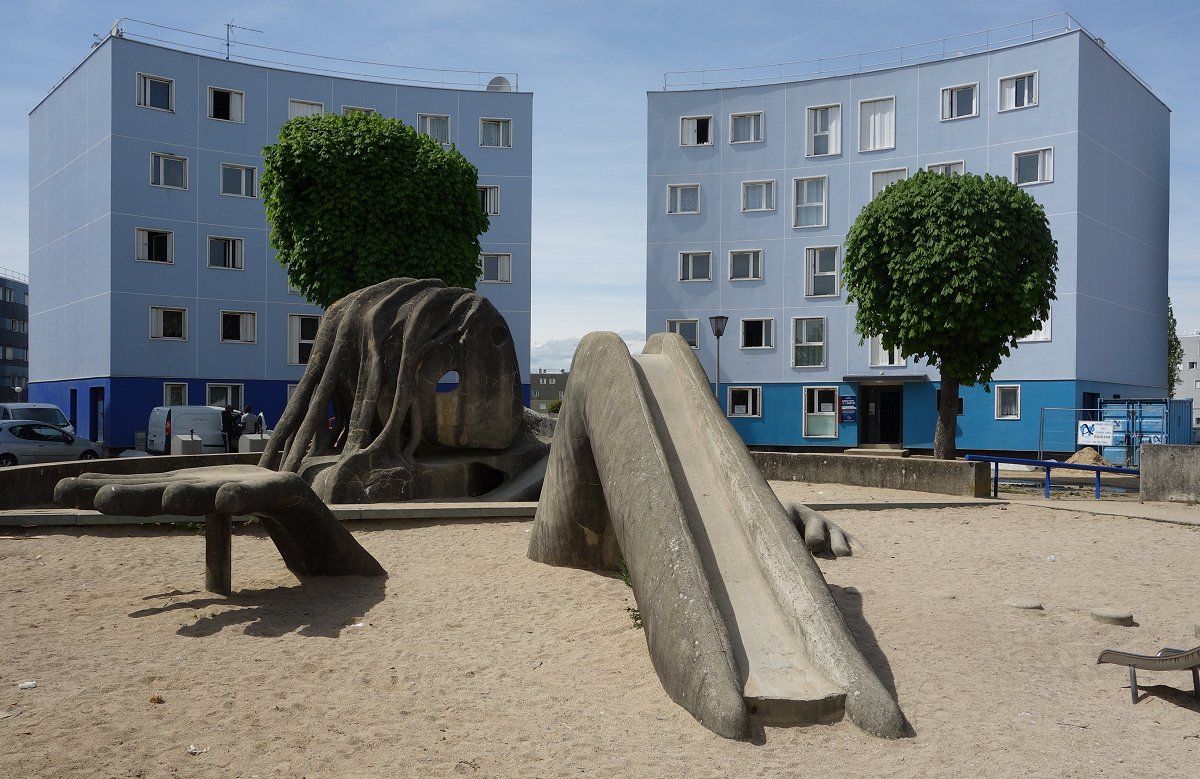
In La Grande Borne, the housing corporation Groupe Opievoy has been working since 2007 on a renovation program that has now largely been completed. That certainly benefits the residents. The improved and renovated architecture of the famous post-war social housing architect Émile Aillaud forms a positive condition. The special design by Aillaud with its monumental qualities offers La Grande Borne opportunities to be a distinctive environment and a chance to become a Cité des Enfants again.
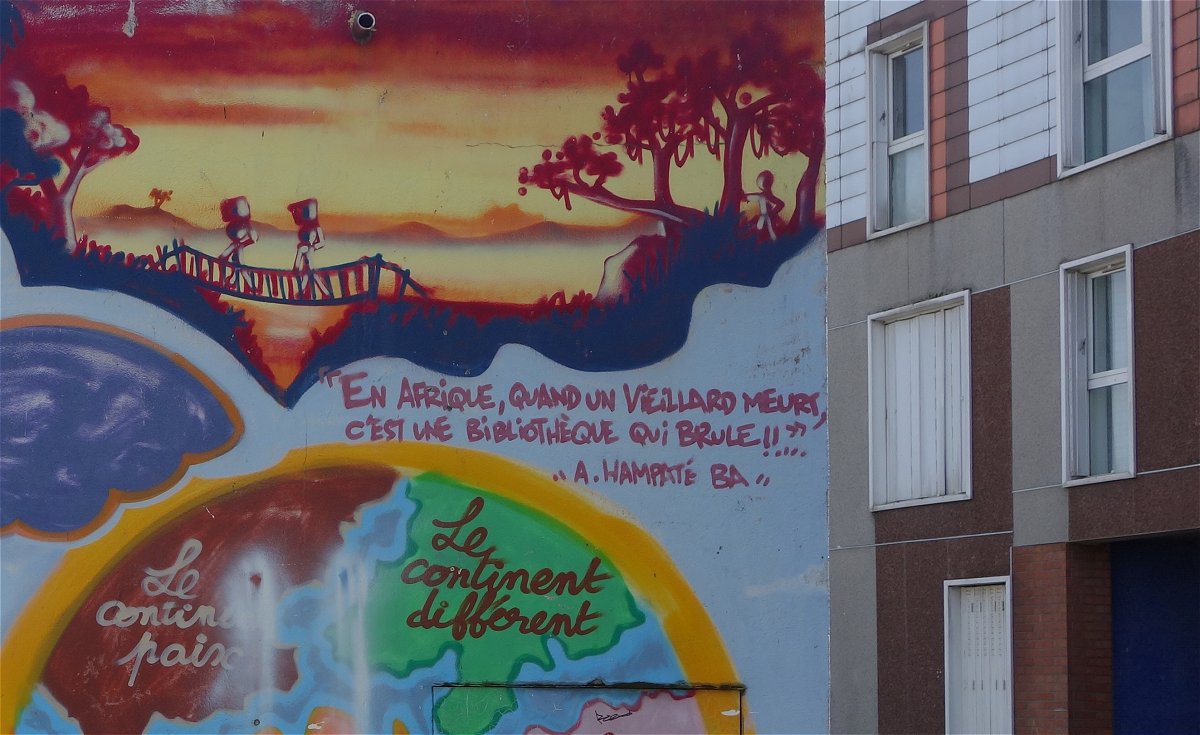
The improvement of accessibility and housing, in combination with a renewed architectural appearance, can turn the image of La Grande Borne into a positive one. But all plans and projects cannot work without the inhabitants. As said, it is crucial that the stereotypical image of neighbourhoods such as La Grande Borne is broken and that the population is taken seriously and is given social and economic opportunities, as well as being offered a situation that enables them to create and to utilize these kinds of opportunities themselves.
The importance of language and culture should not be underestimated. The street language and the stories about the neighbourhood contribute to a positive image and social strengthening of the inhabitants. For example, the quote from the Malian writer, historian and ethnologist Amadou Hampâté Bâ (1901-1991) on the painted wall of a transformer house in La Grande Borne speaks volumes: “En Afrique, quand un vieillard meurt, c’est une bibliothèque qui brûle” (In Africa, when an old man dies, a library burns down). He spoke these words in a speech to the UNESCO assembly in 1960, in which he advocated the development and allocation of resources for the preservation of the oral tradition in Africa. Similarly, the local artists here point out the importance of culture in La Grande Borne. Graffiti can stand for a violent ‘tag’, but also for an artistic ‘piece’. Both forms of graffiti can be found in La Grande Borne. But the beautiful and rich works of art dominate the streetscape. Another clear positive signal for the future.
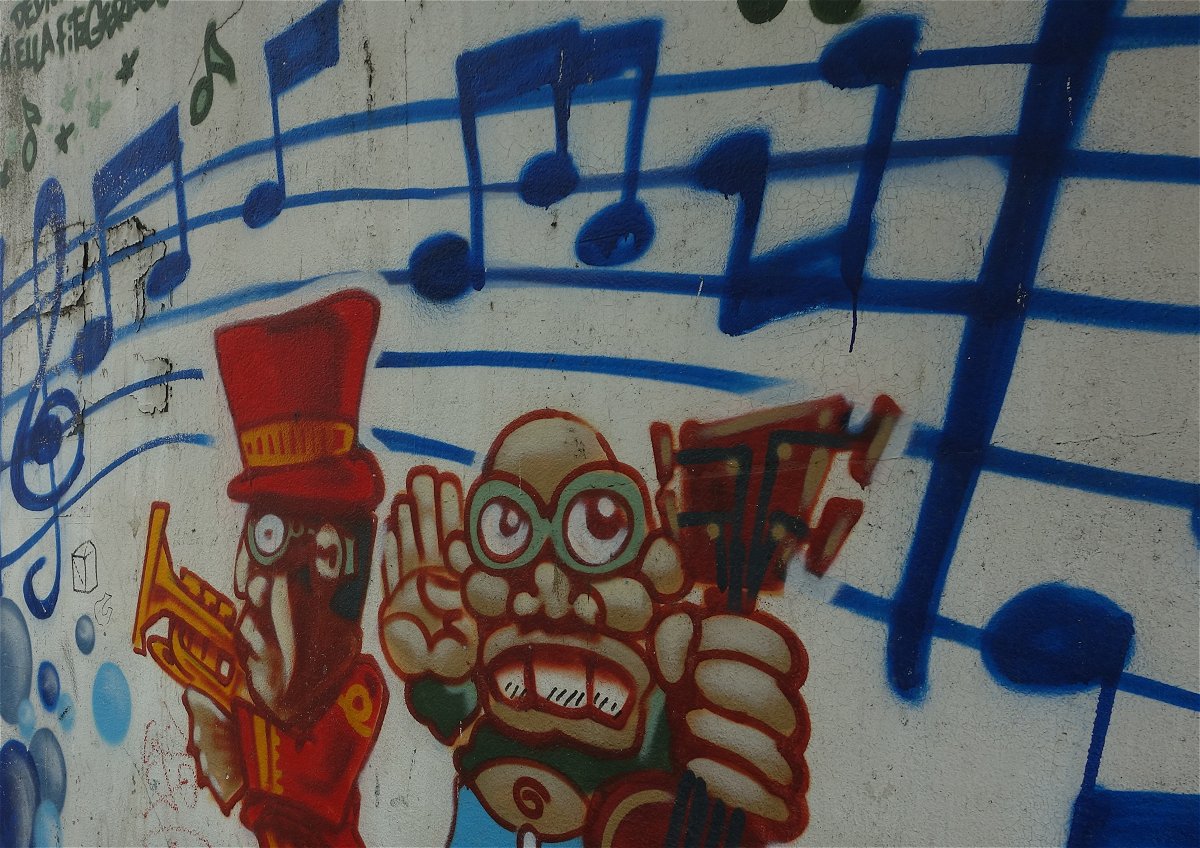
Rap can be violent and misogynistic. That certainly happens, for example when Kalash Criminel raps in his slang (verlan) that he wants to traumatisen a police officer (un keuf) in Grigny (en vil-ci t’es llé-gri): “Comme un keuf en vil-ci t ‘es llé-gri; J’vais tous les traumatiser (hey).” But rap can also be socially involved. When rap works as a life lesson, this culture offers opportunities to strengthen social engagement. Grigny, and thus also La Grande Borne, are known for their rich rap culture. For example, the well-known rapper-comedian Gazouza Setif lives in La Grande Borne and his paroles show that he cares deeply about his neighbourhood, although he uses language that is not easy for everyone. Moreover, he makes it very clear that with an address in Grigny, the roads to work in the (rich) city of Paris remain closed.
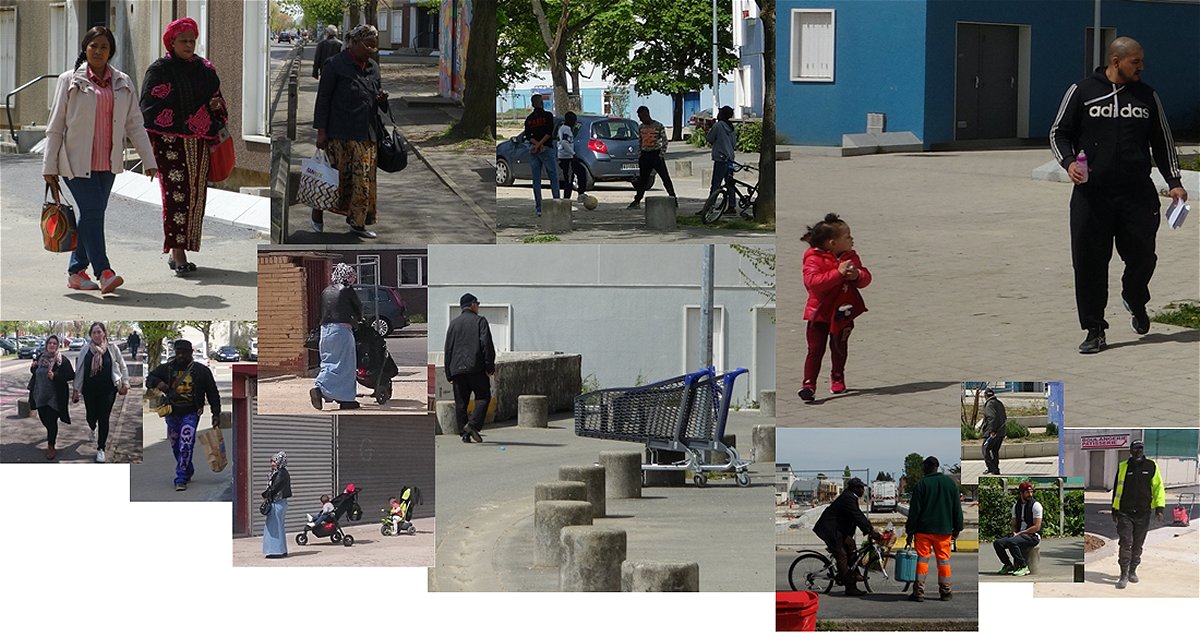
TIMELINE
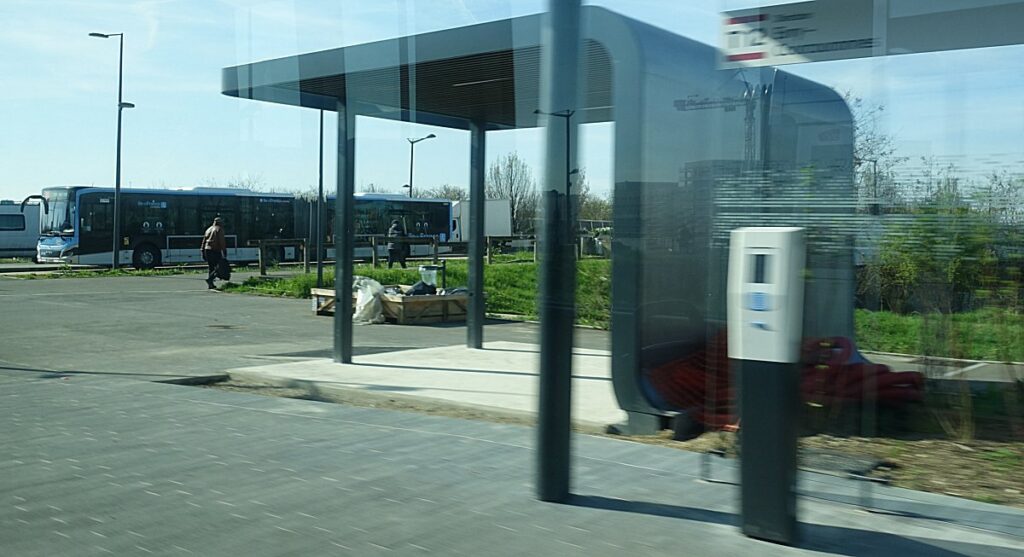
March 22, 2024 – Additional fieldwork, Tzen4 project.
June 1, 2023 – Meeting with Philippe Rio, the mayor of Grigny / La Grande Borne. See this news item.
January 24, 2023 – In collaboration with Geert Kloppenburg, Favas.net’s project on la Grande Borne has been presented at Pakhuis de Zwijger, Amsterdam, the Netherlands (‘Paris: at the end of the line’).
November 2022 – The supply of amenities in La Grande Borne has been under pressure for a long time. Many shops have closed in recent years. At the end of November 2022, there is even a threat of the closure of the last grocery store. Residents have mobilized against the proposed closure.
October 2021 – La Grande-Borne celebrated last month its 50 years anniversary. Problems are not gone, but Favas.net wants to underline the positive things, like the beneficial conservation and rehabilitation projects, including 300 million euro investments – between 2007 and 2021 renovation work took place in nearly 3000 apartments (Yvelines Essonne). Moreover, La Grande-Borne’s ‘20th Century Heritage label’ has positively marked its fifty years of existence. The ‘cité’ has been opened up thanks to the so-called ‘traversante’ axis. But still Émile Aillaud’s imprint is still there, like social cohesion, since there are only two apartments per floor. Living together has not disappeared. Cooking for your neighbours still happens (according to a local source). Meanwhile public transport has been improved by the new bus service 402 that uses the busway along the ‘traversante’ axis. In the near future bus 402 will be replaced by the new ‘T Zen 4’ high service quality bus.
News 2018 – The president of France rejected the ‘master plan’ of Borloo to help out the people in the French suburbs. If there is not a real plan, what will the French government actually do for millions of people who are living in poverty? Nevertheless Macron said he wants to invest directly in people, so they will change their neighbourhoods instead of the government. The French president wants to offer people the opportunity to study, to have a job, to live in a safe environment, in order to change the suburbs into a place that is worthwhile for young people to grow up in.
Download the Borloo plan ‘Vivre ensemble – Vivre en grand. Pour une réconciliation nationale’ (in French).
October 2016 witnessed a tragic attack on a police car. Favas.net investigated this case. October 2021, 5 years later! Still the situation is problematic. The newspaper Le Parisien (September 30, 2021) writes about the neighbourhood’s history and this tragic event: “Les commerces périclitent, la délinquance s’installe. Petit à petit, la Grande-Borne est gangrenée, comme d’autres cités sensibles, par le trafic de drogue et les violences urbaines. Paroxysme de cette violence, l’attaque au cocktail molotov, en 2016, contre des policiers côté Viry-Chatillon. « Cette affaire a traumatisé tout le quartier », confie un travailleur social.”
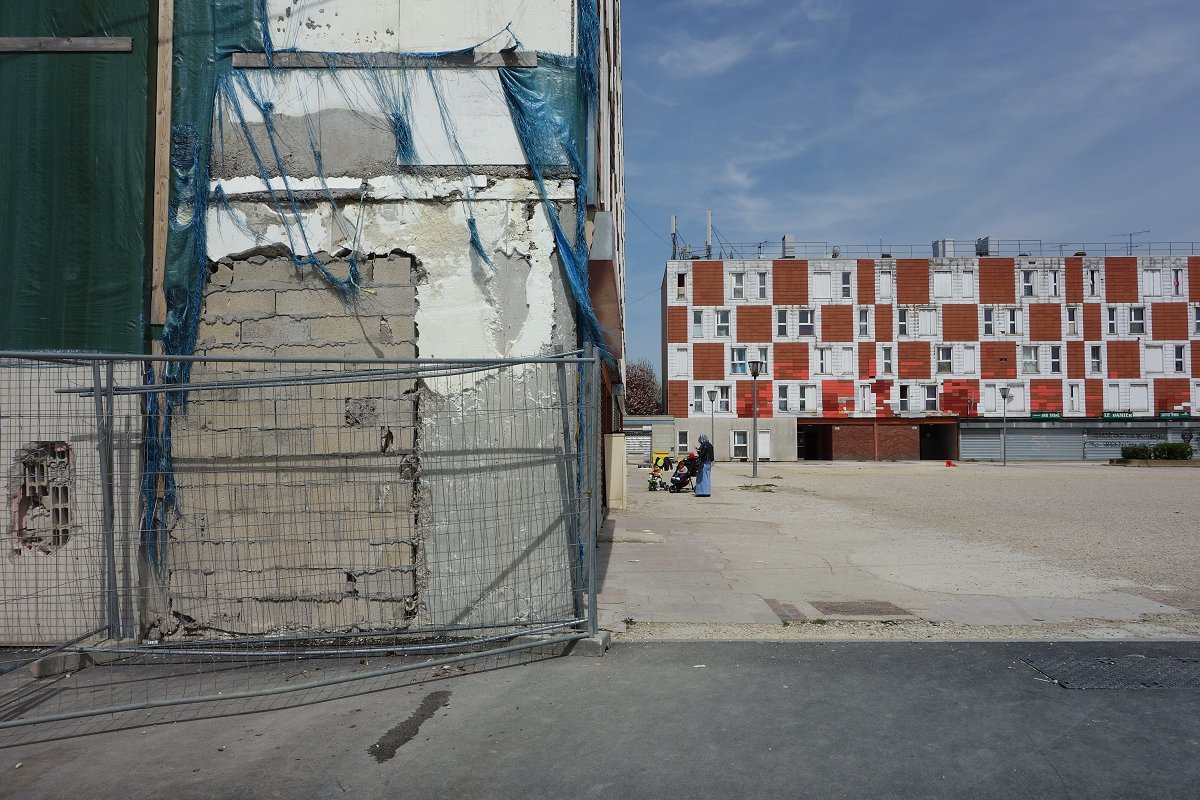
La Grande Borne (Paris-Grigny, France)
Acknowledgements
La Grande Borne is a project of Favas.net, in co-operation with Laurent Chambon, Geert Kloppenburg and many others. All texts and images by Favas.net. Maps (tramways and busways): Maximilian Dörrbecker (Chumwa), Creative Commons Attribution-Share Alike 2.5 Generic.
This (research) project is still ongoing. Preliminary results were published (2016) in the premier Dutch magazine on landscape architecture, urban planning, and urban design Blauwe Kamer (in Dutch). The production of documentary started March 2022. The research project has been explained and presented at numerous lectures (e.g. Ghent University, Belgium) and recently at Pakhuis de Zwijger, Amsterdam, the Netherlands (January 24, 2023). Fieldwork was continued during 2017-2019 and again in 2022.
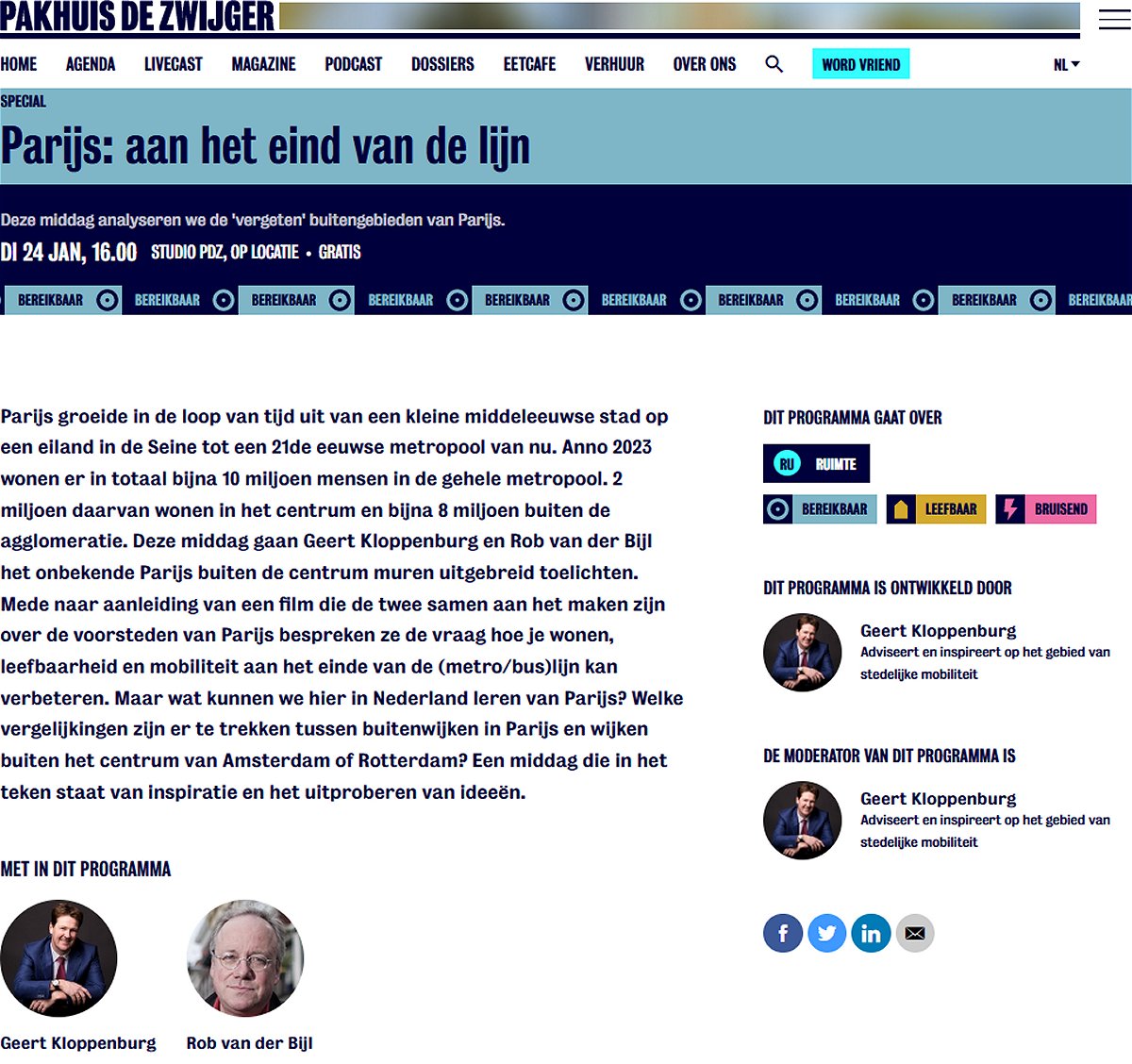
Some references:
. Renaud Epstein, Le ‘problème des banlieues’ après la désillusion de la renovation. Metropolitiques, le 18/01/2016
. Doug Saunders, Arrival city. Cornerstone, 2011.
. Wouter Vanstiphout, De rol van stedenbouw, architectuur en stadsbestuur in de rellen in de Franse voorsteden van 2005. De architect heeft het gedaan! Crimsonweb, 2010.
See also (in Dutch):
